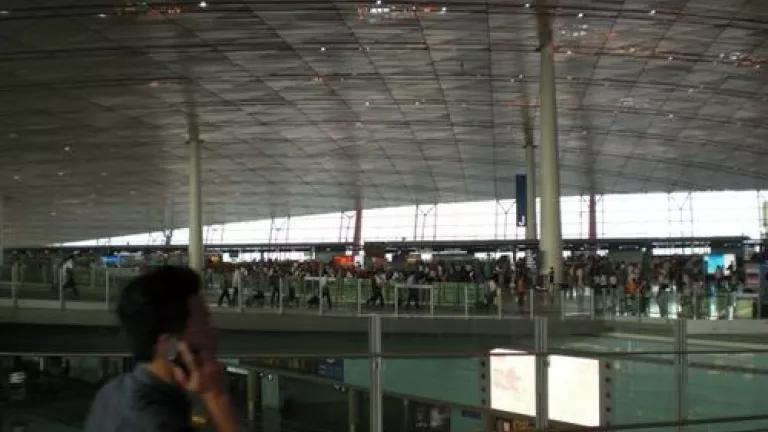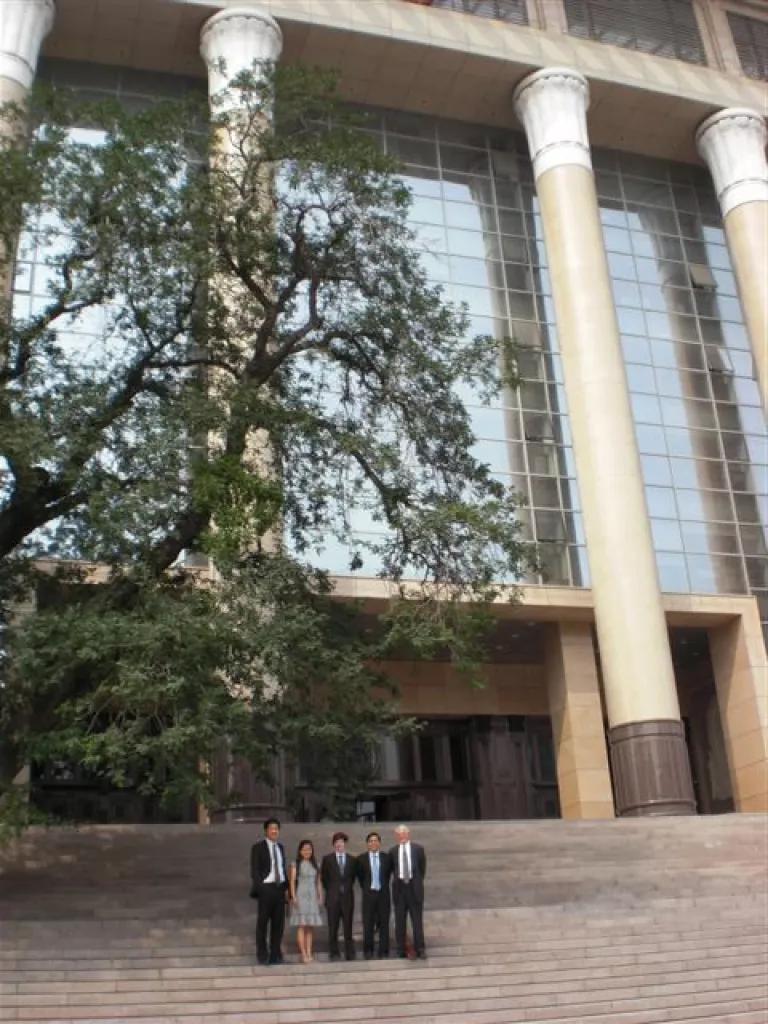
This post is part of a series on my recent travels in China. Stay tuned for more posts on China’s efforts to become greener.
China has a sense of scale that is unlike anything in the United States. Maybe this is what the Europeans felt when then hit the American plains and saw open space on a scale that does not exist in Europe. Here, of course, the scale comes from people and manmade buildings, not from the natural world.
And it hits you as soon as you land in Beijing. The airport is supposedly the biggest structure on Earth, and I believe it—it’s a massive arching shallow dome and it takes ages to get from one side to another. When you land, though, you cannot see the other side of the airport for the smog, which has remained thick all my time here.
The next thing that hit me was the size of the roads. The main arteries in Beijing have 10 lanes each way. And still they aren’t big enough to contain congestion: imagine a 20-lane traffic jam. Coming back from a meeting yesterday, we go out of the cab across the street from the hotel because it would have taken 15 minutes just to go a few blocks down the street to where we could take a u-turn and come back.
On Sunday, I went to the area behind the Forbidden City where there are artificial lakes and islands built for the emperor. We had dinner at a restaurant that specializes in supposedly imperial dishes. On the menu, in addition to a lot of sharks fin soup dishes (which really depress and anger me given that 90 percent of shark populations have been decimated, in large part because of this fashion), were: frog ovary, camel paw and hump, deer tendon, deer lip, turtle meat, venison, and goose foot web. I had the kale. For unlike the emperors, I am a vegetarian.
I’ve been told that the idea that the emperors wanted to eat this is baloney – they wanted the good stuff and supposedly cooks made dishes for them out of easily obtainable ingredients so that they could make it any time of year just in case the emperor was in the mood.
On Monday, I met with the head of the Chinese NGO that NRDC is working with on our pollution information transparency index (PITI). This is an amazing project. It has documented the policies of the largest 113 cities in China regarding public dissemination of pollution data.
This index has gotten great press in China, was named one of the top 10 environmental events of 2009, and is already causing a number of cities to open up. Who wants to be number 98 or even 75 out of 113?
Ma Jun, the man who runs the group we work with, was inspiring. He is one of China's best-known environmentalists, and he spoke passionately about his work to make transparency about pollution emissions the norm in China.
After lunch in the office, we went to the Supreme People’s Court where I met with a couple of the judges and a deputy director of the 4th division, civil part—the one that handles environmental and maritime matters.
The directors of the court—the administrators—are far more important and powerful than the judges. They were asking about our laws and rules for handling oil spills and the like. It was a surprisingly in depth conversation lasting two hours, with the help of a translator. They asked pretty detailed questions; fortunately my experience dealing with oil spills in the New York harbor long ago as well as my time at the New York Attorney General’s office helped.
And even here I could sense the enormous of scale of this country. The building of the Supreme People’s Court is about 10 times bigger than the US Supreme Court building.

